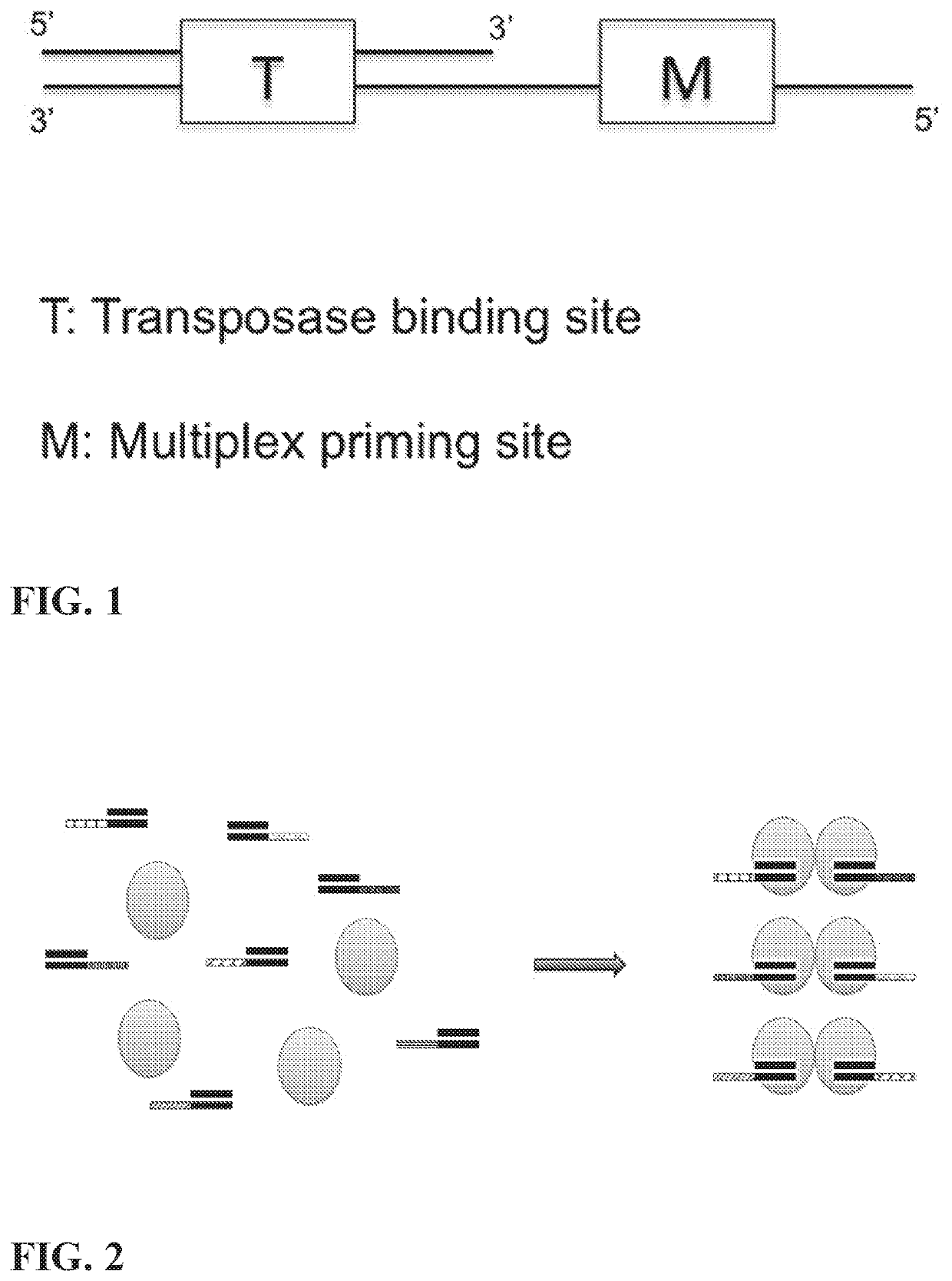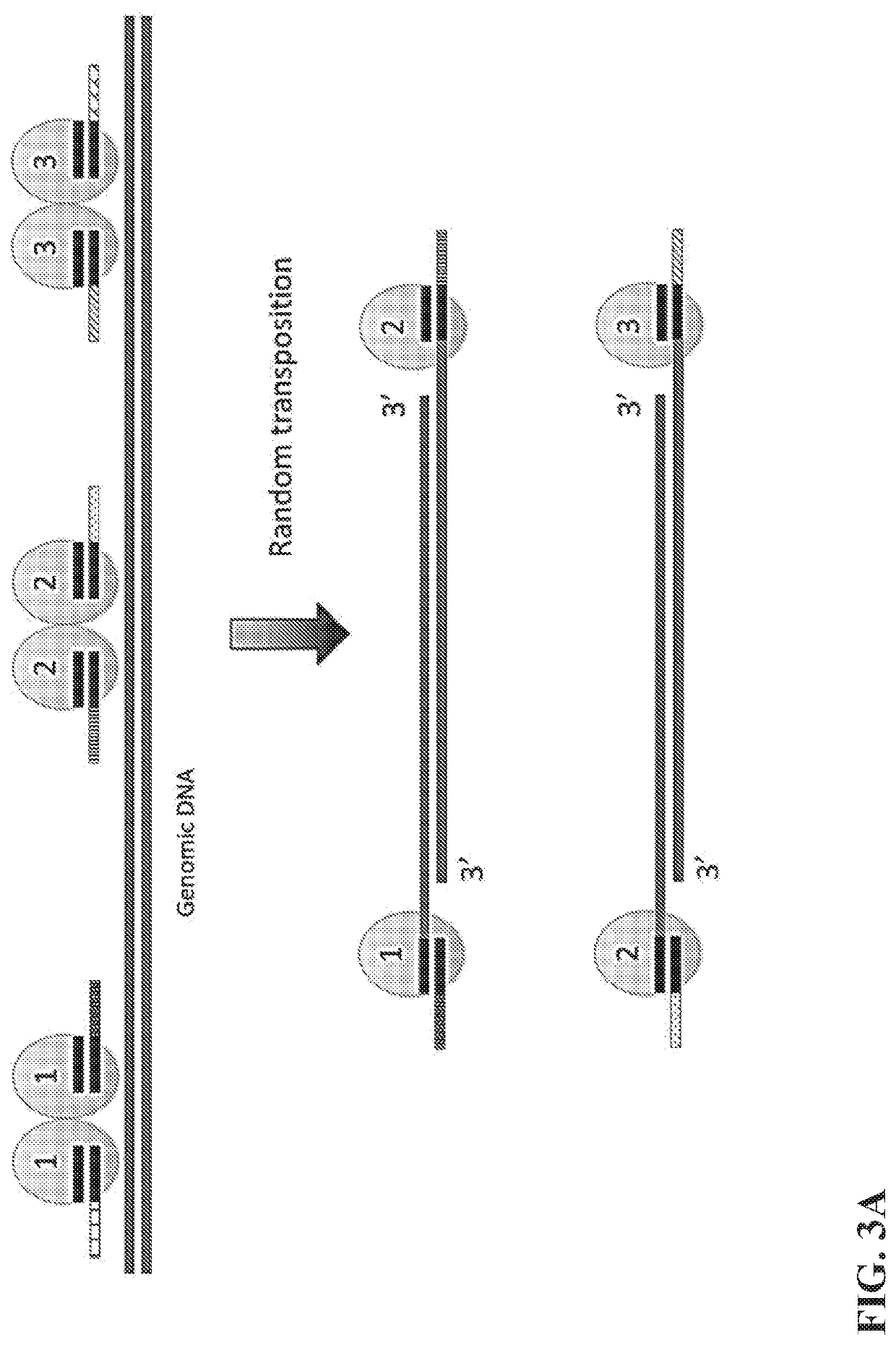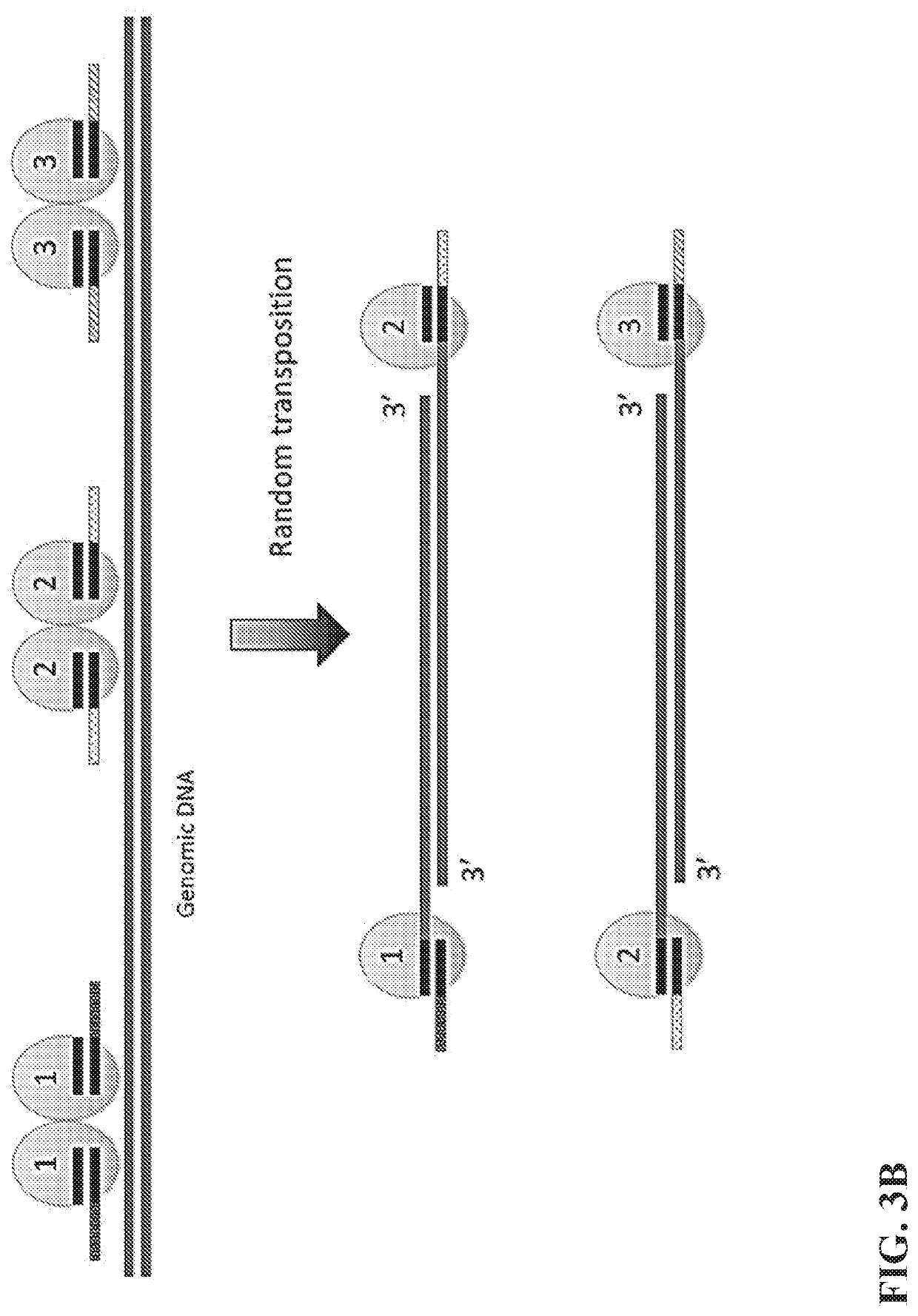Multiplex End-Tagging Amplification of Nucleic Acids
a nucleic acid and multi-end technology, applied in the field of single cell genome sequencing, can solve the problems of reducing the loss rate, reducing the efficiency of dna preparation, and affecting the quality of dna synthesis, so as to reduce the loss ra
- Summary
- Abstract
- Description
- Claims
- Application Information
AI Technical Summary
Benefits of technology
Problems solved by technology
Method used
Image
Examples
example i
General Protocol
[0102]The following general protocol is useful for whole genome amplification. A single cell is lysed in lysis buffer. The transposome library including transposomes each with a different and unique primer binding site sequence (or each with two different and unique primer binding site sequences) as described herein and transposition buffer are added to the cell lysis which is mixed well and is incubated at 55° C. for 10 minutes. 1 mg / ml protease is added after the transposition to remove the transposase from binding to the single cell genomic DNA. Q5 DNA polymerase, dNTP, PCR reaction buffer and primers are added to the reaction mixture which is heated to 72° C. for 10 min to fill in the gap generated from the transposon insertion. 5 to 25 cycles of PCR reaction are performed to amplify the single cell genomic DNA. The amplification products are purified for further analysis such as by high through put deep sequencing.
example ii
Cell Lysis
[0103]A cell is selected, cut from a culture dish, and dispensed in a tube using a laser dissection microscope (LMD-6500, Leica) as follows. The cells are plated onto a membrane-coated culture dish and observed using bright field microscopy with a 10× objective (Leica). A UV laser is then used to cut the membrane around an individually selected cell such that it falls into the cap of a PCR tube. The tube is briefly centrifuged to bring the cell down to the bottom of the tube. 3-5 μl lysis buffer (30 mM Tris-Cl PH 7.8, 2 mM EDTA, 20 mM KCl. 0.2% Triton X-100, 500 μg / ml Qiagen Protease) is added to the side of the PCR tube and span down. The captured cell is then thermally lysed using the following temperature schedule on PCR machine: 50° C. 3 hours. 75° C. 30 minutes. Alternatively, mouth pipette a single cell into a low salt lysis buffer containing EDTA and protease such as QIAGEN protease (QIAGEN) at a concentration of 10-5000 μg / mL. The incubation condition varies based ...
example iii
Transposition
[0104]The single cell lysis and the transposome library are mixed in a buffer system containing 1-100 mM Mg2+ and optionally 1-100 mM Mn2+ or Co2+ or Ca2+ as well and incubate at 37-55° C. for 5-240 minutes. The reaction volume varies depending on the cell lysis volume. The amount of transposome library added in the reaction could be readily tuned depending on the desired fragmentation size. The transposition reaction is stopped by chelating Mg2+ using EDTA and optionally EGTA or other chelating agents for ions. Optionally, short double stranded DNA could be added to the mixture as a spike-in. The residue transposome is inactivated by protease digestion such as QIAGEN protease at a final concentration 1-500 μg / mL at 37-55° C. for 10-60 minutes. The protease is then inactivated by heat and / or protease inhibitor, such as AEBSF.
PUM
| Property | Measurement | Unit |
|---|---|---|
| diameter | aaaaa | aaaaa |
| temperature | aaaaa | aaaaa |
| concentration | aaaaa | aaaaa |
Abstract
Description
Claims
Application Information
 Login to view more
Login to view more - R&D Engineer
- R&D Manager
- IP Professional
- Industry Leading Data Capabilities
- Powerful AI technology
- Patent DNA Extraction
Browse by: Latest US Patents, China's latest patents, Technical Efficacy Thesaurus, Application Domain, Technology Topic.
© 2024 PatSnap. All rights reserved.Legal|Privacy policy|Modern Slavery Act Transparency Statement|Sitemap



